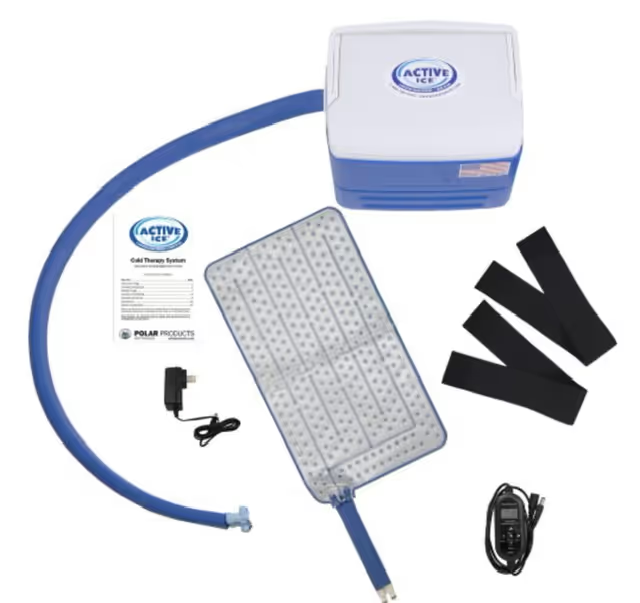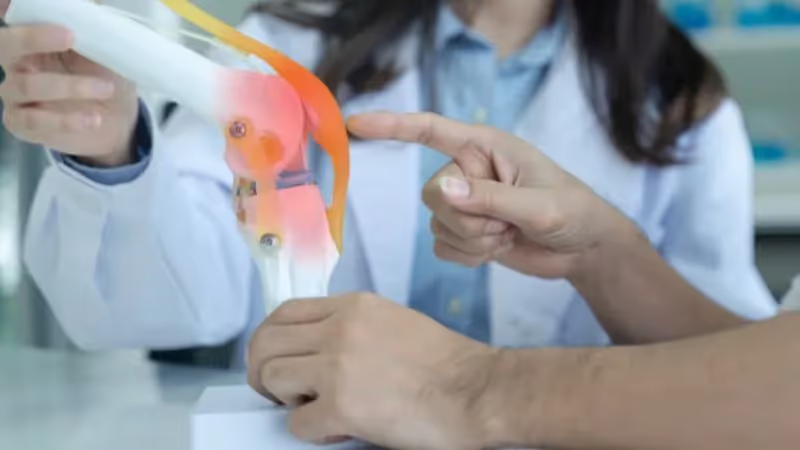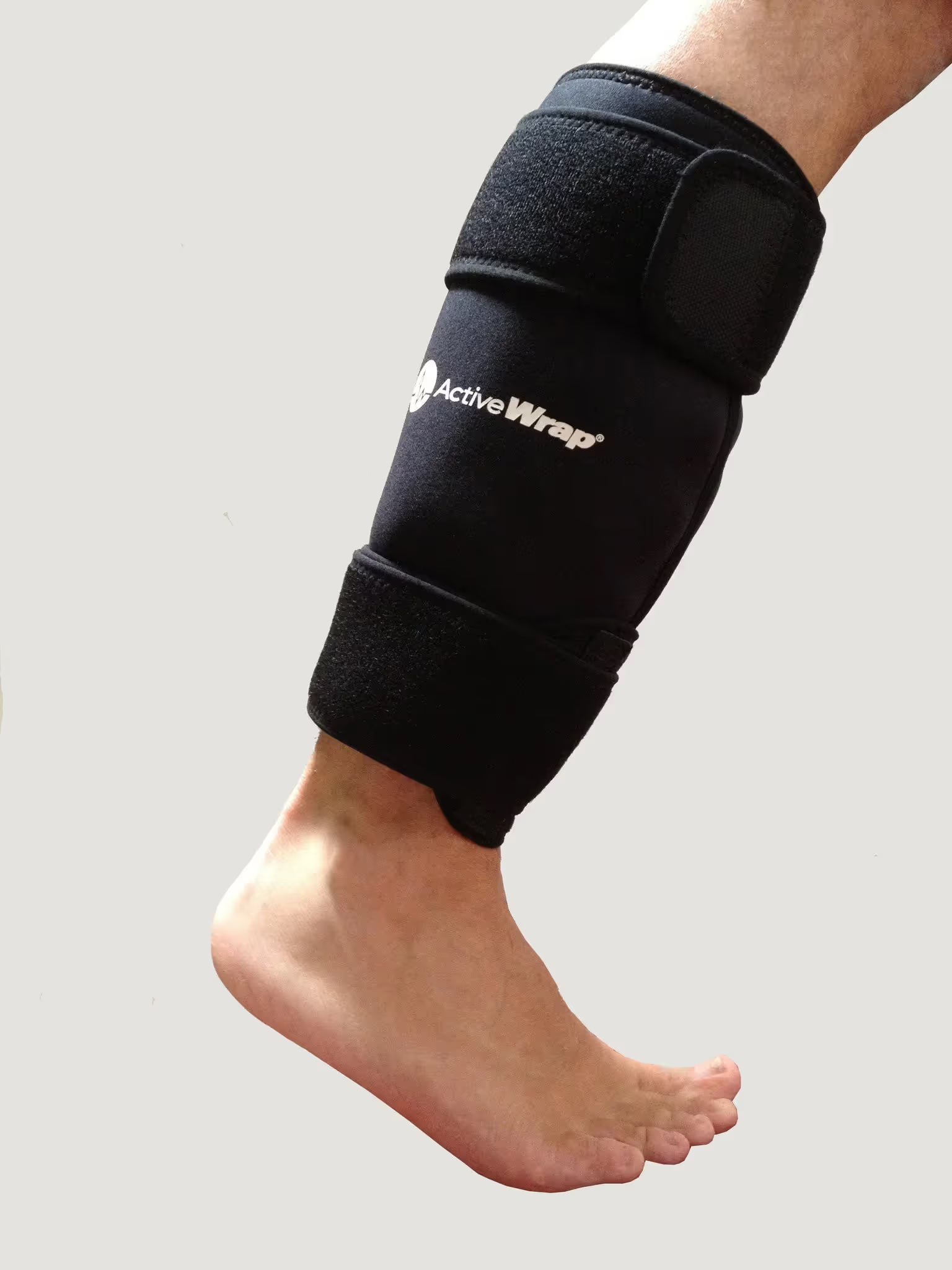Knee replacement surgery, also known as total knee arthroplasty (TKA), is a common surgical procedure performed to relieve pain and improve function in patients with knee joint arthritis or other knee joint conditions. While TKA is generally considered a successful procedure, some patients may experience limited range of motion (ROM) or stiffness in the knee joint after surgery. This can be due to various factors such as scar tissue formation, adhesions, or muscle tightness. When conservative measures fail to improve knee joint mobility, manipulation under anesthesia (MUA) may be considered as a treatment option. MUA is a procedure in which the patient is placed under anesthesia, and the surgeon manipulates the knee joint to break up scar tissue or adhesions that may have formed after knee replacement surgery.
About 3-6% of knee replacements end up needing a MUA. Generally, this individual is genetically pre-disposed to excessive scar tissue formation and there was nothing they could do about it. Sometimes, however, the patient was not instructed properly on how to manage pain, symptoms and exercises to reduce the risk of needing an MUA. Knowing how to properly manage your symptoms and complete stretches for your knee after a knee replacement is key to avoiding an MUA. If you need help with this, please take the Post-Surgery Course instructed by Dr. Samantha Smith, knee replacement specialist and expert.
Reduce the Risk
Although it is not common to need a MUA, if you are not receiving proper physical therapy and/or have an inexperienced surgeon, your risk for a MUA increases. The need for MUA after knee replacement surgery can be influenced by several factors.
Surgical Factors: The surgical technique used during the knee replacement surgery can impact the risk of postoperative stiffness. Factors such as implant alignment, soft tissue balancing, and component selection can influence the likelihood of developing stiffness after surgery. Along with that, the experience and skill of the surgeon performing the knee replacement surgery can impact the risk of postoperative stiffness. Surgeons with extensive experience and expertise in knee replacement surgery may have lower rates of postoperative complications, including stiffness.
Patient Factors: Individual patient characteristics, such as age, preexisting joint stiffness, history of previous knee surgeries, and medical conditions such as diabetes or obesity, can affect the risk of developing postoperative stiffness.
Rehabilitation Factors: The type and intensity of postoperative rehabilitation, including the timing and frequency of physical therapy, patient compliance with exercises and activity modification, and overall rehabilitation protocols, can also influence the risk of developing stiffness after knee replacement surgery. Most importantly, your therapist should be teaching you how to manage your pain, swelling and other symptoms so you can properly bend the knee when completing stretches. Aggressive physical therapy should only be done in special cases. Please see the Knee Replacement Course to get proper care for your knee replacement.

Indications for Manipulation Under Anesthesia
MUA after knee replacement surgery is typically considered when a patient experiences limited range of motion in the knee joint that persists despite conservative measures such as physical therapy, exercises, and stretches. Generally, a MUA is considered when >90 degrees of flexion (bending) does not occur by 6 weeks post surgery or <10 degrees of extension (straightening) does not occur by 10 weeks post surgery. Some of the common indications for MUA after knee replacement surgery include:
- Decreased Range of Motion: Limited flexion (bending) or extension (straightening) of the knee joint can significantly impact a patient's ability to perform daily activities and adversely affect their quality of life. If a patient's knee joint has not achieved adequate range of motion after the initial knee replacement surgery, MUA may be considered to improve the joint's mobility.
- Scar Tissue Formation: Scar tissue or adhesions can form in the knee joint after knee replacement surgery as part of the normal healing process. However, excessive scar tissue formation can restrict the movement of the knee joint, leading to limited range of motion. MUA can be used to break up scar tissue or adhesions and improve knee joint mobility.
It's important to note that not all patients with limited range of motion after knee replacement surgery are candidates for MUA. The decision to undergo MUA should be made on a case-by-case basis, and the patient's overall health, age, and other individual factors should be taken into consideration. A thorough evaluation by an experienced orthopedic surgeon is necessary to determine if MUA is the appropriate treatment option for a patient.
Procedure of Manipulation Under Anesthesia
The procedure of MUA after knee replacement surgery typically involves several steps. It is usually performed in a hospital or surgical center setting, and the patient is placed under general or regional anesthesia, depending on the surgeon's preference and the patient's health condition.
- Preoperative Evaluation: Before undergoing MUA, the patient will undergo a preoperative evaluation, which may include a physical examination, X-rays, and other exams to assess the knee joint's condition and confirm the need for the procedure. The patient's medical history, including any previous surgeries or complications, will also be reviewed to ensure the safety and appropriateness of the procedure.
- Anesthesia Administration: Once the patient is brought into the operating room, anesthesia will be administered. This can be either general anesthesia, where the patient is completely asleep, or regional anesthesia, such as a spinal or epidural block, which numbs the lower half of the body. The type of anesthesia used will depend on the patient's health condition and the surgeon's preference.
- Surgical Manipulation: Once the patient is under anesthesia, the surgeon will carefully manipulate the knee joint to break up scar tissue or adhesions that may have formed after knee replacement surgery. The surgeon will use a combination of techniques, including gentle bending (flexion) and straightening (extension) of the knee joint, and rotational movements to free up any restricted areas.
- Intraoperative Assessment: During the procedure, the surgeon will assess the knee joint's range of motion and make note of any improvements achieved. The goal is to achieve the best possible range of motion while avoiding any excessive force that could potentially damage the knee joint or surrounding structures.
- Postoperative Care: After the manipulation is completed, the patient will be carefully monitored as they wake up from anesthesia. Pain medications and other supportive measures, such as ice and elevation, may be provided to manage any discomfort or swelling.
Once the patient is fully awake and stable, they will be transferred to a recovery room, where they will be closely observed. Physical therapy and exercises may be initiated as early as the same day of the procedure to optimize the knee joint's mobility and promote a speedy recovery.
Risks and Complications
Like any surgical procedure, MUA after knee replacement surgery carries risks and potential complications. These may include:
- Joint or Soft Tissue Damage: Manipulating the knee joint under anesthesia involves applying force to the joint to break up scar tissue or adhesions. However, excessive force or improper technique can potentially cause damage to the knee joint, ligaments, tendons, or other soft tissues, leading to bleeding, swelling, or even joint instability. This is why an MUA is highly considered at 6 weeks so the scar tissue isn’t too thick and will cause increased stress on the surrounding structures.
- Infection: As with any surgical procedure, there is a risk of infection. Although the risk of infection is relatively low, it can occur after MUA, leading to further complications and delays in recovery. Strict adherence to sterile techniques and proper postoperative care can help minimize the risk of infection.
- Pain and Discomfort: MUA can be a painful procedure, and patients will experience discomfort, bruising, or swelling around the knee joint after the manipulation. Pain medications and other supportive measures will be provided to manage pain and discomfort during the recovery period.
- Nerve or Vascular Injury: There is a small risk of nerve or vascular injury during MUA. Nerves or blood vessels around the knee joint may be inadvertently damaged during the manipulation, leading to numbness, tingling, or other nerve-related symptoms. However, such complications are rare and are usually temporary.
- Blood Clots: After any surgery, including MUA, there is a risk of developing blood clots, also known as deep vein thrombosis (DVT), which can potentially travel to the lungs and cause a life-threatening condition called pulmonary embolism (PE). Proper preventive measures, such as blood thinning medications, compression stockings, and early ambulation, will be taken to reduce the risk of blood clots.
- Fractures or Implant Damage: Manipulation of the knee joint under anesthesia can potentially cause fractures or damage to the artificial knee implant. This risk is higher in cases where the implant is not well-fixed, if there are pre-existing issues with the implant or if the MUA is being performed after 10 weeks post surgery. Careful handling and technique during the manipulation can help minimize this risk.
- Recurrence of Scar Tissue: Despite the manipulation, scar tissue or adhesions can potentially reform after MUA. This may require further interventions, such as additional manipulations or even revision surgery, to address the issue.
- Stiffness or Limited Range of Motion: While the goal of MUA is to improve the knee joint's range of motion, there is a possibility that the desired outcomes may not be achieved. In some cases, patients may continue to experience stiffness or limited range of motion despite the manipulation.
- Psychological Impact: MUA and the recovery process can be physically and emotionally challenging for patients. Some patients may experience anxiety, depression, or frustration during the recovery period, especially if the desired outcomes are not achieved. Appropriate support and counseling may be necessary to help patients cope with the psychological impact of the procedure.
Recovery and RehabilitationThe recovery and rehabilitation process after MUA will vary depending on the patient's individual circumstances, the extent of the manipulation, and the surgeon's recommendations. However, some general guidelines may include:
- Pain Management: Pain medications will be prescribed to manage pain and discomfort during the recovery period. It is important for patients to follow the prescribed pain management plan and report any unusual or severe pain to their healthcare provider. Along with pain medication, using ice and elevation often is very helpful. An ice machine will be very useful after this procedure.

Ice Machine- use code DRSAM10 for 10% off- Physical Therapy: Physical therapy is a critical component of the recovery process after MUA. A physical therapist will work with the patient to gradually increase the knee joint's range of motion through gentle exercises, stretching, and strengthening techniques. The therapist may also use modalities such as heat, cold, or electrical stimulation to promote healing and reduce pain and swelling.
- Home Exercises: Patients will be given specific home exercises to perform on a regular basis to complement the physical therapy sessions. These exercises may include gentle range of motion exercises, muscle strengthening exercises, and activities to improve balance and coordination.
- Ambulation: Early ambulation, or walking, is encouraged after MUA to promote blood flow, prevent blood clots, and improve overall mobility. Patients may initially require assistance, such as a walker or crutches, and gradually progress to walking independently as tolerated.
- Activity Modification: Patients may need to modify their daily activities and avoid high-impact or strenuous activities that can potentially stress the knee joint during the recovery period. The surgeon and physical therapist will provide specific instructions on activity modification based on the patient's individual needs and progress.
- Follow-up Appointments: Regular follow-up appointments with the surgeon and physical therapist will be scheduled to monitor the progress of the knee joint's range of motion and address any concerns or issues that may arise during the recovery process.
- Compliance with Medications and Instructions: It is important for patients to strictly follow the prescribed medications, instructions, and precautions provided by the healthcare team. This may include taking medications as prescribed, avoiding certain movements or positions that may stress the knee joint, and maintaining good nutrition and hydration for optimal healing.
- Patience and Persistence: The recovery process after MUA can take time, and it is important for patients to be patient and persistent in theiR efforts. It may take several weeks to months to achieve the desired outcomes in terms of improved range of motion and reduced stiffness. It is crucial for patients to stay committed to their rehabilitation program and work closely with their healthcare team to ensure a successful recovery.
Managing Expectations
It is essential for patients to have realistic expectations about the outcomes of MUA after knee replacement surgery. While MUA can be an effective intervention to improve range of motion and reduce stiffness, it may not always result in complete restoration of normal knee function. Some factors, such as the severity of the initial stiffness, presence of scar tissue or adhesions, and pre-existing conditions, may affect the overall outcomes of the procedure.
It is very common for individuals to have increased range of motion for the first 1-2 days after a MUA and then to stiffen back up due to the swelling and pain. Scar tissue does not form that quickly so you will still be encouraged to stretch and push the knee. Scar tissue takes ~6 weeks to full form.
Patients should be aware that MUA is not a one-time solution and that rehabilitation efforts may need to continue for an extended period of time. It is also important to understand that the recovery process may be challenging and may require patience and persistence.
It is crucial for patients to have open communication with their healthcare team and discuss any concerns or questions they may have about the procedure, the recovery process, and the expected outcomes. A realistic understanding of the potential benefits and risks of MUA can help patients manage their expectations and make informed decisions about their treatment plan.
Conclusion
Manipulation under anesthesia (MUA) after knee replacement surgery can be a valuable intervention to improve the range of motion and reduce stiffness in the knee joint. It is a relatively safe procedure when performed by experienced surgeons and can significantly benefit patients who experience limited mobility and functional limitations after knee replacement surgery.
However, like any medical intervention, MUA does carry some risks and potential complications. These may include infection, bleeding, nerve or blood vessel damage, fractures or implant damage, recurrence of scar tissue, stiffness, limited range of motion, psychological impact, and other complications. It is crucial for patients to have a thorough understanding of the potential risks and benefits of MUA and make an informed decision in consultation with their healthcare team.
The recovery process after MUA will vary depending on individual circumstances, and it requires diligent adherence to a rehabilitation program, including pain management, physical therapy, home exercises, activity modification, and compliance with medications and instructions. Managing expectations and having realistic expectations about the outcomes of MUA is also crucial for a successful recovery.
In conclusion, MUA can be a valuable intervention for improving knee joint function after knee replacement surgery. However, patients should carefully weigh the risks and benefits, have open communication with their healthcare team, and follow the recommended rehabilitation program to achieve the best possible outcome.
Heading 1
Heading 2
Heading 3
Heading 4
Heading 5
Heading 6
Lorem ipsum dolor sit amet, consectetur adipiscing elit, sed do eiusmod tempor incididunt ut labore et dolore magna aliqua. Ut enim ad minim veniam, quis nostrud exercitation ullamco laboris nisi ut aliquip ex ea commodo consequat. Duis aute irure dolor in reprehenderit in voluptate velit esse cillum dolore eu fugiat nulla pariatur.
Block quote
Ordered list
- Item 1
- Item 2
- Item 3
Unordered list
- Item A
- Item B
- Item C
Bold text
Emphasis
Superscript
Subscript

.avif)







